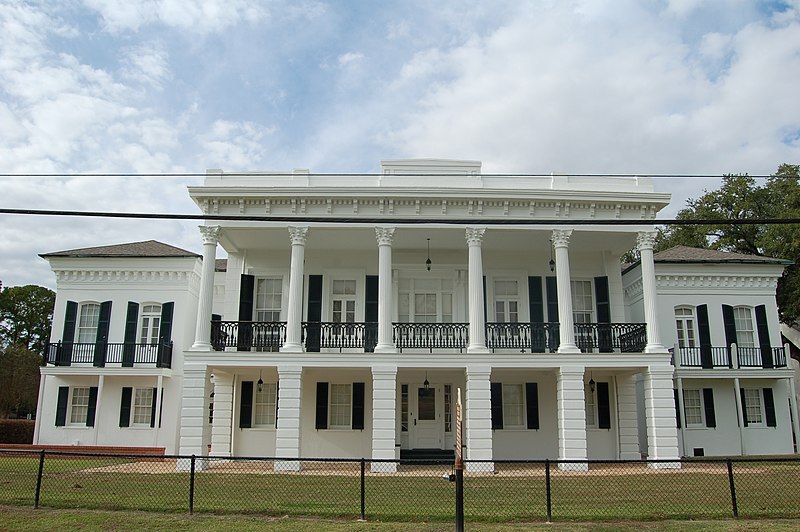Summary | Excerpt | Reading Guide | Reviews | Beyond the Book | Read-Alikes | Genres & Themes | Author Bio

This article relates to King of the Armadillos
 King of the Armadillos by Wendy Chin-Tanner takes place partly in a federal institute in Louisiana where young protagonist Victor Chin is sent to be treated for Hansen's disease — commonly known as leprosy — in the 1950s.
King of the Armadillos by Wendy Chin-Tanner takes place partly in a federal institute in Louisiana where young protagonist Victor Chin is sent to be treated for Hansen's disease — commonly known as leprosy — in the 1950s.
This inpatient center, often referred to simply as Carville, was built on the site of an abandoned sugar plantation first rented to the state by the bank that owned it. In 1894, it was established as the Louisiana Leper Home. Nuns from the Daughters of Charity order arrived in 1896 to care for the patients and take charge of the home's development. It was purchased by the state in 1905, and selected as a site for a National Leprosarium in 1921.
Hansen's disease is a chronic condition brought on by a kind of bacteria that can cause tissue and nerve damage in infected people, resulting in loss of sensation, muscle weakness or paralysis. While it is relatively difficult to transmit and is treatable with medication today, it has historically been a feared and misunderstood illness. Chin-Tanner's novel depicts Carville during a time of progress in how the disease was handled and perceived.
In the early decades of Carville's existence, the stigma surrounding Hansen's disease was extreme. It was believed to be very contagious as well as associated with moral failing, and quarantine laws required those with a diagnosis to be separated from the rest of the population. The expectation for patients coming to Carville was that they would stay there for life. But it was also intended to be "a place of refuge, not reproach; a place of treatment and research, not detention." Carville was designed as a self-sustainable, accessible community space, with quarters for both patients and staff. In the late 1930s, the Public Works Administration built a new hospital on the grounds that included over $300,000 worth of equipment and facilities, and in the early 1940s, Dr. Guy Faget, the hospital's director, began experimental treatment with a sulfone (organic sulfur compound) drug called Promin, which seemed to reverse the symptoms of the disease for many, although slowly.
This success would lead to greater freedom for patients and more effective treatments in the coming decades. A Country Roads article describes Carville of the '40s and '50s as a place where residents "flourished," even publishing their own magazine, The Star, which portrayed them "building new houses, planting gardens, and starting small businesses to sell crafts they'd made themselves, along with 'imports' from the outside world."
Despite continued advancements and a growing understanding that Hansen's disease was not very communicable, many residents chose to stay at Carville after they were able to leave, having become used to living in the community. The U.S. Department of Health and Human Services took over management in 1982, and the facility was renamed Gillis W. Long Hansen's Disease Center in 1986, after a congressman who had lobbied to keep it open. In 1999, the remaining residents were given a choice between relocating to a care center in Baton Rouge or receiving a lifetime stipend to live on their own elsewhere. The site of Carville is now home to the National Hansen's Disease Museum, which according to its web page "[i]nterprets the history, treatment and rehabilitation of leprosy in the US, [h]onors those who lived at the national leprosarium as patients, and [c]elebrates health care professionals who made medical history as they battled leprosy."
Carville Historic District, the former site of the treatment center, in 2011
Photo by Z28scrambler (CC BY-SA 3.0)
Filed under Places, Cultures & Identities
![]() This "beyond the book article" relates to King of the Armadillos. It originally ran in July 2023 and has been updated for the
September 2024 paperback edition.
Go to magazine.
This "beyond the book article" relates to King of the Armadillos. It originally ran in July 2023 and has been updated for the
September 2024 paperback edition.
Go to magazine.
Censorship, like charity, should begin at home: but unlike charity, it should end there.
Click Here to find out who said this, as well as discovering other famous literary quotes!
Your guide toexceptional books
BookBrowse seeks out and recommends the best in contemporary fiction and nonfiction—books that not only engage and entertain but also deepen our understanding of ourselves and the world around us.